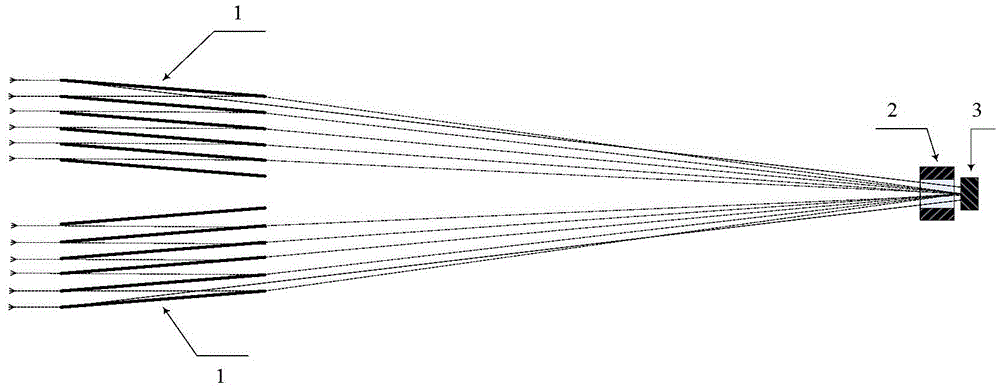A Pulsar Navigation X-ray Timing Detector
A pulsar navigation and X-ray technology, applied in the field of aerospace detection, can solve the problems of low on-orbit reliability, high risk of air leakage, and large background interference, and achieve the effects of small focal spot size, enhanced sensitivity, and suppression of interference.
- Summary
- Abstract
- Description
- Claims
- Application Information
AI Technical Summary
Problems solved by technology
Method used
Image
Examples
Embodiment Construction
[0022] The present invention will be further described now in conjunction with accompanying drawing.
[0023] refer to figure 1 , the pulsar navigation X-ray timing detector of the present invention comprises: a nested cone-shell reflector 1, a magnetic deflector 2 and an X-ray detector 3; Or nearly parallel incident X-rays converge near the conical apex position of the nested conical shell reflector 1; the magnetic deflector 2 is installed at the front end of the X-ray detector 3, and may be incident on the X-ray detector The charged particles of 3 deviate from the X-ray detector 3 to avoid interference to the X-ray detection; the X-ray detector 3 is installed near the cone apex position of the nested conical shell reflector 1, and is used to convert the X-ray optical signal into an electrical signal. signal, and time-stamp the electrical signal.
[0024] The following is a further description of each component in the pulsar navigation X-ray timing detector.
[0025] The n...
PUM
 Login to View More
Login to View More Abstract
Description
Claims
Application Information
 Login to View More
Login to View More - R&D
- Intellectual Property
- Life Sciences
- Materials
- Tech Scout
- Unparalleled Data Quality
- Higher Quality Content
- 60% Fewer Hallucinations
Browse by: Latest US Patents, China's latest patents, Technical Efficacy Thesaurus, Application Domain, Technology Topic, Popular Technical Reports.
© 2025 PatSnap. All rights reserved.Legal|Privacy policy|Modern Slavery Act Transparency Statement|Sitemap|About US| Contact US: help@patsnap.com

